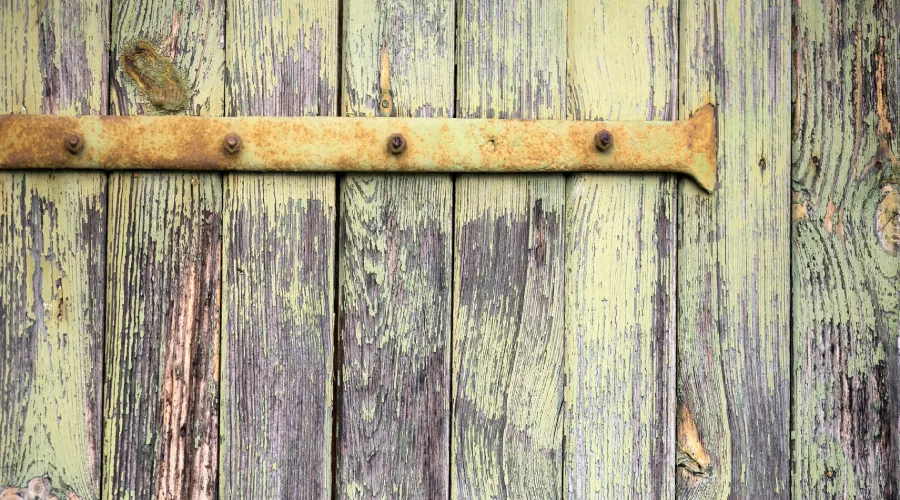A few days after we moved into our current home I noticed streaks of sunlight passing across the doorway. The front door was not the only place to see it. It's actually through the doorway. There are about a dozen hairline cracks on the door's wood, around 2 inches of wood.
How To Repair Small Hairline Cracks On Wood Door With Wood Putty. What Is The Reason That Wood Doors Crack?
Hairline Cracks At The Top Left And Bottom Corners
I've been planning to patch these cracks for a couple of years, however, It's just the way life goes. In the fall of this year, I reaffirmed my plans to complete this task to complete our autumn maintenance checklist. I developed this checklist to assist me in better preparing our home for winter's cold.
It was logical to make this change in the autumn. The door's cracks can compromise the integrity of the door. They also let cold air enter the home.
The result is less comfortable, energy-efficient homes and higher energy costs.
Then life came back to haunt me and I couldn't repair the holes within my doors.
In the last week, I've kicked myself in the face and finally worked on sealing these cracks in my hairlines.
After it was completed I kicked myself a second time. It was a mere 15 minutes to finish. It was an easy and affordable fix. Why didn't this happen earlier?
What Causes Exterior Wood Doors Split?
The first question is what is the reason for the cracks in my wooden door? Doors made of wood tend to crack as time passes because the doors' panels aren't able to expand and expand in response to fluctuations in humidity and temperature.
What is the reason these panels aren't moving? The answer is the finish layers and dried paint which accumulate over time. They hold the panels in their place and do not allow movement. If there's an increase in humidity or temperature the timber continues to shrink and expand however, the panel remains locked in place, which causes cracks.
What Is The Reason You're Required To Fix The Cracks?
As we've mentioned before wooden doors are excellent assets for homes built in the past. They are able to define an era by its style and time. Additionally, the wood used in the old wooden doors by
Door Frame Repair in Applewood is made to last for a long time and generally lasts longer than doors made of newer materials. In the end, restoration is always a superior alternative, particularly in the case of minor problems with the door.

Do I Have The Ability To Repair These Cracks By Myself?
You may decide to fix the damage yourself and some repairs can be completed by individuals who are not skilled in the field. But, if you're not interested in making the effort, or don't have the confidence to repair it yourself It is best to contact a professional to fix your door.
It is also possible to learn the following article: How to fix your front door made of wood
How Can I Fix A Hole In A Wooden Door?
Before doing anything else, examine the damaged area. What is the location of the crack? Is it in the rails or the wood panel? Do you think it was the stretching of the rails that caused the cracks or was something chipped away because of other causes? If the cracks result caused by the stress upon your doors, you could possibly fix them. If the part was damaged by a chip, fillers might be more effective.
The most efficient way to fix cracks in the door's wood is to apply wooden filler and putty. The decision to go with one or the other will depend on the look you want to accomplish. If you intend to refinish the doors using a consistent coat, then a wood filler is the most suitable. It is applied prior to finishing, and drying and sanding are sometimes required. After it has dried and hardened, you are able to proceed to apply paint or varnish. Wood putty is not able to expand and is able to withstand more stretching and shrinking as time passes. It is an excellent idea to think about as a repair for doors that are external and also you can pick the closest hue to your door's style.
For cracks that are the result of stretching, it is possible to force the pieces to be put back together. If the problem is within the panel of wood, you could try to get it out, or, if it's difficult to do you can simply pull it back into place using glue. Be sure to wash the slits with care to reconnect them.
You'll require the following tools and supplies:
- Putty knife
- Dremel tool
- Materials
- The wood glue or the filler
- Epoxy sealant and adhesive
- Wood spline
- Sandpaper
Follow these steps to fix cracks in doors that are solid.
1. Select between Putty And Filler Made From Wood Putty and Filler
Both filler and wood putty is able to fix door cracks, however, there are some slight differences between them.
Putty is pliable and does not harden once it has dried. It is a great option when you don't plan to stain, sand, or paint your door.
A filler is the best option if your door is covered in paint and would, as a result, require a new paint job after the repair of the cracks. In contrast to putty, the filler is dried hard and sandable.
2. Apply Filler Over The Crack
The wood filler provides a more durable solution to deal with door cracks. To get the best results, make sure you choose high-quality filler.
Use a putty blade to fill in the crack using some wood filler. This can be done for all cracks in the door. Use more filler as required to fill the crack completely.
3. Set Aside A Sufficient Drying Time
Remove any filler that is too thick. The surface doesn't need to be perfectly even. You can polish it later.
Give the filler plenty of for drying time. A good quality filler usually has an earlier drying time.
Pro Tips Use a blow-dryer to blow hot air over the crack that has been filled in to allow that filler material to dry more quickly.
4. Sand The Surface
To achieve a smooth finish, you'll have to sand down the surface on which you put the filler.
Make delicate strokes of sand in your desired area with medium-grit Sandpaper (60-100 Grit) till the area is smooth.
To ensure a long-lasting fill make sure to reapply the filler, and let it dry before sanding the surface a second time. Make sure to use gentle strokes in order to keep from scratching excessively or creating scratches on the door.
5. Paint The Surface
Choose a similar shade that you can apply to the sanded surface.
Use the right technique of painting to avoid leaving marks of paint on the front door. If you are able, paint using an upholstered roller with an upholstered cover as opposed to using a brush. Rollers give a cleaner appearance as opposed to paintbrushes. But a paintbrush is more convenient to use when you're creating grooves on a door with panels.

6. Apply Epoxy Glue To Medium-sized Cracks
If you're facing moderate-sized cracks the wood filler, or even putty won't repair the damage. Choose a more durable compound, such as epoxy glue.
Then make sure to then fill in the crack using an epoxy sealer. The sealer aids the adhesive to stick.
Then, squeeze a bit of epoxy glue into the crack. It will then expand to make the crack larger. Thus, a tiny amount can help a lot.
Allow the glue to dry, then apply an additional layer of sealing. The sealer should dry.
Make use of the finest smooth sandpaper (120-220 gr.) to smooth the surface. Apply stain or paint to the surface as required.
7. Resolve Large Cracks With Wood Splines
For fixing large holes in your door, you'll need more than filler or glue, or have to contact
Door Repair Mississauga. The addition of a wood spline to the split will provide the longest long-lasting solution.
Make use of a Dremel to clear and make room in the split, so your wood spline fits comfortably.
Then put the spline inside the crack to check for the size. Then, adjust the size of the spline until it is well into the crack.
Remove the spline, and fill in the crack using the highest-quality wood glue. Incorporate the spline into the crack. Use a mallet for rubber to gently push the spline to the fracture.
Remove the edges that protrude to make sure the spline lines up with the doors. Let the glue dry before sanding it.
Stain or paint the doors as required.
This is all you need to do to repair a damaged door. Your door should look brand new.
Extra Tips
Here are some additional tips to ensure you get the most out of this project.
Prepare Your Workspace
Since this project will involve painting and sanding, be certain to shield your floors by using dust cloth. It is not a good idea to allow filler paint, filler, or wood dust to damage your flooring or carpet.
Cleanse The Door
Before starting, wipe the door to get rid of dust. Putty, filler, and even glue do not stick well to a smudge-prone surface. Make sure to clean off the doors after finishing sanding, and before staining or painting.
A Putty Is A Good Option For Stained Doors
For fixing hairline cracks on painted doors the best option is to apply wood putty because you won't need to sand the area. Fill cracks using some putty, then wipe off any excess and you're good to go.
Replace The Damaged Wood
Certain interior doors are constructed of thin plywood sheets which are susceptible to cracking. In certain cases, using putty or filler may not fix the cracks.
If you notice new cracks appearing or old cracks are still opening, think about replacing the whole sheets of plywood. Removal of the old sheet should be straightforward considering that the sheet is secured to the door frame by an adhesive.
